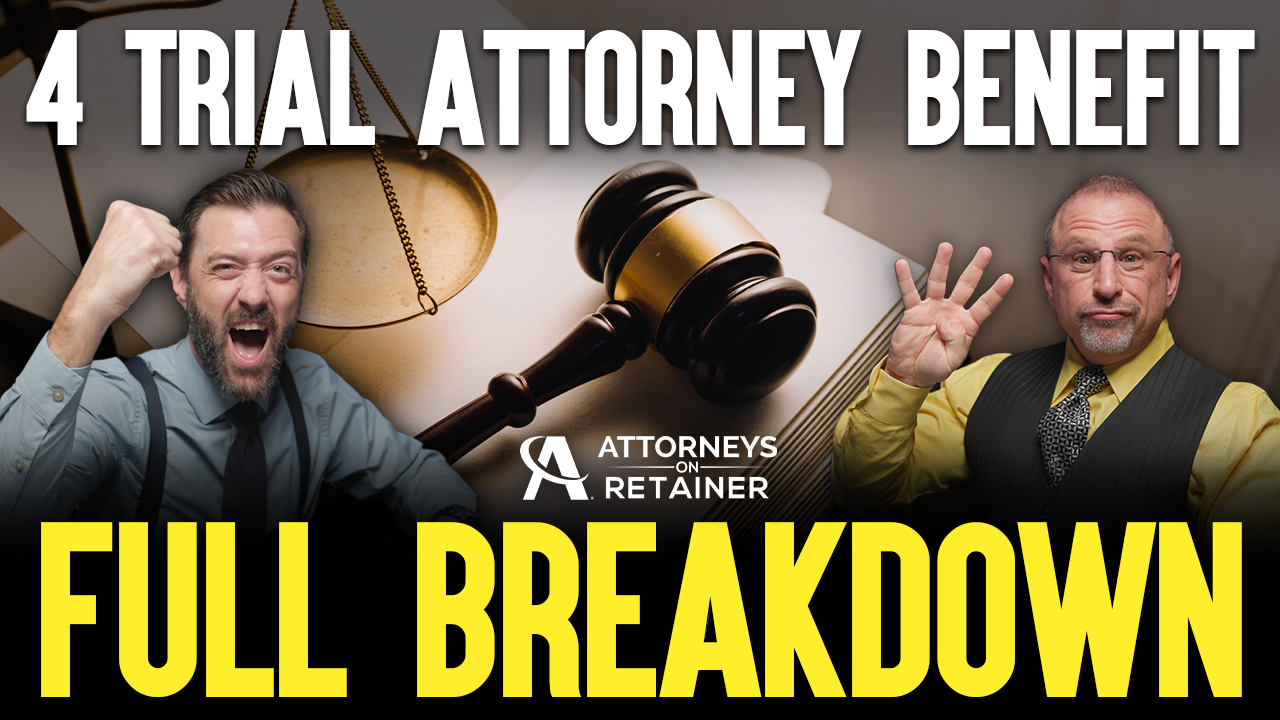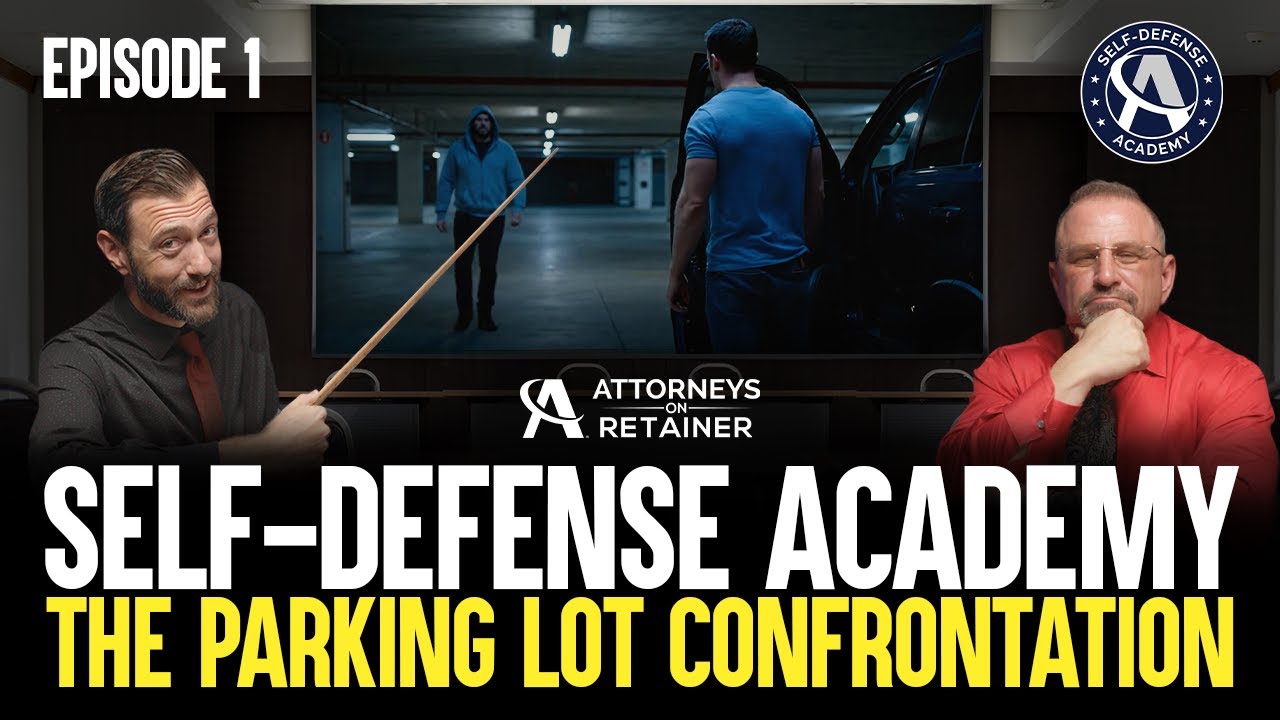Fighting The State: Release - What Happens After You’re Charged?
May 13, 2024
As we continue our series on Fighting The State, we are going to talk about what happens after you get charged and what you can expect in the criminal justice system. There are lots of different things to cover, such as release conditions, phases of a criminal case, factors that judges consider when determining a person’s release, and many more. Our law firm, Attorneys For Freedom, has over 30 years of experience in representing and defending clients in criminal cases. We know the ins and outs of how it all works and will walk you through the entire process.
Key Points:
- Understanding Release Conditions
- Phases of a Criminal Case
- Factors Judges Consider for Release
- Types of Release Conditions
- Understanding Bonds
- Modifying Release Conditions
- Violations of Release Conditions
- Practical Advice for Defendants
Understanding Release Conditions
Release conditions play a key role in the criminal justice process. They decide if a defendant stays in jail or gets released before the trial. As defense attorneys, we often need to explain the proceedings in a criminal case to our clients. Since many clients do not know much about the legal system, it is important that clients understand the process for their peace of mind and defense plan.
“It is reassuring for people to know what type of hearing it is, what the judge will think about, and what rules might be set.”
Phases of a Criminal Case
Understanding how a criminal case works is easiest when broken down into three parts. First, there is the initial phase, which is the onset of the criminal case. Then, there is the guilt phase, which decides what charges they are facing and then determines if the defendant is guilty. Finally, there is the sentencing phase. If the defendant is found guilty, this phase determines the suitable punishment. Here is a more detailed explanation of these three phases:
1. Initial Phase: This phase determines if the defendant will be held in custody. If a defendant is released into the community, it is easier for a defendant to participate in their defense.
2. Guilt Phase: This stage decides what charges the defendant is facing and determines if the defendant is guilty. The guilt phase might last a year or longer, depending on the case. This is the time when the defendant reviews the evidence against him and any pretrial motions are made. During this phase, it is decided if the defendant is taking a plea to the charge or a lesser charge or going to trial.
3. Sentencing Phase: If the defendant is found guilty, by a guilty plea or a trial, this stage determines the right punishment. A careful and strategic approach is needed to get the best result. Before sentencing, we commonly ask for a pre-sentence hearing to argue for the best result, treating it like a small trial about the punishment.
Factors Judges Consider for Release
Judges consider several factors when determining release conditions for a defendant, including flight risk based on community ties like residence, family, and employment, which can decrease perceived risk. Past criminal records, especially violent offenses and gang affiliations are crucial when assessing the danger to the community. Additionally, the victim’s opinion significantly impacts the judge’s decision, highlighting the state’s responsibility to consider their perspective, alongside factors like court appearance history and prior convictions, especially for failing to appear. Here is a breakdown of the factors judges must consider:
-
Flight Risk: Judges check if the defendant might run away. They look at things like how long they have lived in the area, their family, and employment status. If the defendant has strong connections to the community, it makes it less likely they will run away. If the defendant did not appear when required during another court case, that will be considered.
-
Danger to the Community: Considerations such as past criminal records, especially violent offenses, and gang connections are particularly important. The judge wants to ensure that they do not release a defendant who might commit another crime. Previous convictions against the defendant, especially for similar or serious offenses, may significantly influence the judge’s decision on whether to grant bail or deny it.
-
Victim’s Opinion: The opinions of any victims involved in the case are also considered. The state must consider the victim’s perspective, which can impact the judge’s decision. Victims have the right to know and to speak during hearings.
Types of Release Conditions
Defendants can be released with just a promise (also known as their own recognizance) to show up in court, which is the most convenient. While the case is pending, the defendant might have to check in regularly with a probation officer and follow rules and procedures like taking drug tests. If there have been contact issues, the court might order them to stay away from the victim or others involved. If the judge is not sure they will behave, they might have to wear an ankle monitor or follow a curfew, so they can be watched.
“Own Recognizance release is the best option because it is the least strict. The defendant just promises to show up for future court dates.”
-
Own Recognizance (OR) Release: The defendant is released based on a promise to appear at future court dates. This is the most lenient form of release or release is the best option because it is the least strict. The defendant just promises to show up for future court dates.
-
Pre-Trial Services: The defendant is released with supervision by a pre-trial services officer, including regular check-ins and compliance with specific conditions. An example of one of the conditions could be required drug testing. Being on pre-trial services is like probation before a conviction, making sure the defendant follows conditions such as regular check-ins.
-
No Contact Orders: These orders prohibit the defendant from contacting the victim or co-defendants. No contact orders are common in cases involving victims or multiple defendants. They are meant to stop witness tampering and protect the case’s integrity.
-
Ankle Monitors and Curfews: These are used to monitor the defendant’s location and ensure compliance with court-ordered restrictions. Ankle monitors and curfews can be used if the judge is not completely confident in releasing the defendant without extra supervision. It helps track their movements and make sure the defendant is following all the rules.
Understanding Bonds
There are several types of bonds that the court can choose from while deciding the defendant’s release conditions. Cash bonds require the defendant to pay the full amount upfront. Surety bonds involve a bail bondsman who pays the full bond after the defendant pays a percentage. Unsecured bonds do not need upfront payment but require the defendant to pay if they fail to appear. No bond could be set when the judge deems the risk too high to release the defendant, often in federal or serious cases. We created a video that discusses what bail bonds are and how they benefit members of our Attorneys On Retainer Program.
-
Cash Bond: This means the defendant must pay a set amount to get out of jail. With a cash bond, you must pay the entire amount of money needed, which the court keeps as a guarantee that you will show up for future court dates.
-
Surety Bond: This usually involves a bail bondsman. The defendant pays a percentage of the bond amount, usually 10%, to the bondsman, who then pays the full bond. The bondsman promises the court that the defendant will show up, and they will pursue you if you do not.
-
Unsecured Bond: You do not have to pay anything upfront, but if you do not show up in court, you agree to pay the bond amount. With this bond, the defendant promises to pay if they do not show, so it is not as costly upfront.
-
No Bond: Sometimes, the judge decides that no amount of money can guarantee the defendant’s appearance, so they stay in jail. This is common in federal cases or serious charges where the risk is too high.
Modifying Release Conditions
The process of modifying release conditions involves filing a motion to request changes based on new circumstances or additional information. It is always beneficial to negotiate with the prosecutor before filing the motion to reach a more favorable outcome. Changes in employment or family emergencies are common reasons to request modifications. Sometimes the initial judge’s conditions might be too harsh, and a more experienced judge may review and adjust them.
Violations of Release Conditions
Violating release conditions can have serious repercussions, such as being taken back into custody. It is imperative for all defendants to thoroughly understand and adhere to these conditions to avoid jeopardizing their case. When you receive the conditions of release, read them carefully and discuss any concerns with your attorney.
“Violations can result in immediate arrest and a hearing to determine if you will remain in custody until your trial.”
Practical Advice for Defendants
Here are some practical tips we recommend for understanding the release process:
-
Stay Informed: Understanding the legal process and your release conditions can significantly affect the outcome of your case. Knowing what to expect helps reduce anxiety and allows for better preparation.
-
Communicate with Your Attorney: Regular communication with your defense attorney is essential. They can provide guidance and address any issues with your release conditions. Your attorney needs to be aware of any changes in your situation to advocate for you effectively.
-
Comply with All Conditions: Strictly adhere to all release conditions to avoid further complications. Non-compliance can lead to arrest and jeopardize your defense strategy.
Understanding the process and conditions after being charged with a crime is vital for any defendant. We provide the essential guidance for this difficult period. For the best legal defense, join our Attorneys on Retainer Program by calling 866-404-5112 or email us.



